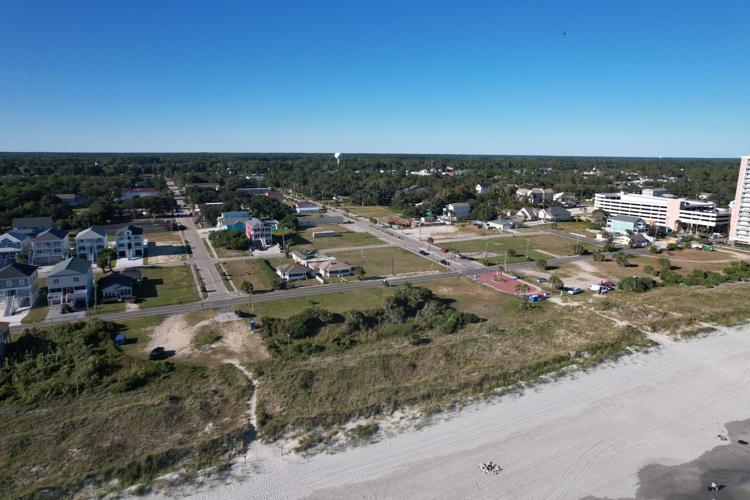By: S.T. Cardinal Tommy.Cardinal@myhorrynews.com
Atlantic Beach has history.
And now the small town bordering the Atlantic Ocean and sandwiched by the city of North Myrtle Beach has been listed on the National Register of Historic Places.
The addition of the town’s historic district onto the national register was announced in January by the National Park Service, describing the area as “generally bounded by Wiley Drive, 29th Avenue South, 32nd Avenue South and the Atlantic Ocean.”
The town says 72 properties within Atlantic Beach have retained their structure and character for over 50 years, contributing to the history of Atlantic Beach.
But what does the designation mean for property owners? According to the National Register of Historic Places website, the designation of a property on the register “places no restrictions” on what the owner of a property can do to the structure “up to and including destruction,” and being listed on the register does not “automatically invoke local historic district zoning or local landmark designation.”
Essentially, there aren’t extra hoops to jump through for those who want to make changes to a building on the National Register of Historic Places.
Virginia Harness with South Carolina’s historic preservation office said that’s a common misconception, saying “it’s not about being the preservation police.”
“National Register does not place restrictions of private property owners, and the state does not place restrictions on private property owners either,” Harness said. “The only time our office would be involved is if the property owner is doing renovations using federal grants or federal money.”
Property owners are free to do what they wish with their property — while also following local zoning rules — as long as “there is no federal involvement and they do not require a state mining permit or a permit from the Bureau of Coastal Management Review.”
Harness said those factors are most likely not going to impact property owners in Atlantic Beach.
While what owners can do to their properties won’t change, what is new is potential tax incentives.
A 20% tax credit is offered by the National Park Service for rehabilitation to a structure in a registered district, but the building must be used for income-producing purposes to qualify for the tax credit. The credit wouldn’t apply for renovations to a private residence unless it is being rented out. The rehabilitation also must follow guidelines laid out by the Secretary of Interior’s standards for rehabilitation.
The South Carolina Department of Archives and History offers plaques for properties on the National Register of Historic Places. Those interested in buying a plaque for $180 may call Brad Sauls at 803-896-6172 or apply online at scdah.sc.gov/historic-preservation/programs/national-register.
The town of Atlantic Beach got its start in 1934 when Black businessman George Tyson purchased two tracts of land and recruited Black doctors, lawyers and educators to the burgeoning community to form the Atlantic Beach Corporation. The community evolved to become a place where Black workers of white establishments across the Grand Strand lived.
The small town was also a refuge for Black beachgoers during segregation in the Jim Crow era with a coastline open to Black tourists. Myrtle Beach and North Myrtle Beach did not welcome Black visitors to the beach, and buoys in the water separated Atlantic Beach from the segregated beaches on either side.
There was also a flourishing music scene in the small town. National acts playing at Charlie’s Place in Myrtle Beach would often stay at Atlantic Beach after their performances, and would even perform in the town. The district’s inclusion in the National Register was due to its relevance in the “Ethnic Heritage: Black and Entertainment/Recreation” criteria, according to the town’s news release.
“The Black Hawk Night Club on Atlantic Beach’s oceanfront became a popular entertainment venue, drawing visitors and residents,” the release states. “The community grew and Atlantic Beach became a vibrant ocean front destination. This storied journey includes the booming days of the 1940’s-50’s when African Americans came from all over to enjoy 'The Pearl', including many prominent R&B singers of the time.”
Desegregation had a negative economic impact on Atlantic Beach as Black visitors opted to go to Myrtle Beach and North Myrtle Beach and investment into the town floundered. In 1968 Windy Hill, Cherry Grove, Ocean Drive and Crescent Beach joined together to form the city of North Myrtle Beach. Atlantic Beach decided to remain a separate community and in 1969, incorporated to form the town of Atlantic Beach.
The town held a celebration last October to celebrate the 90th anniversary of when Tyson purchased the land, which would later become Atlantic Beach.
